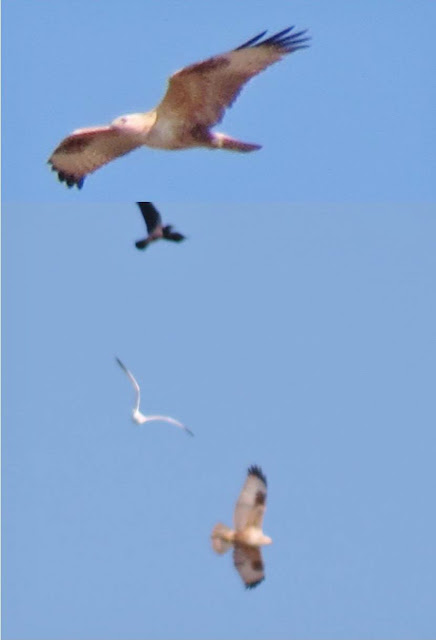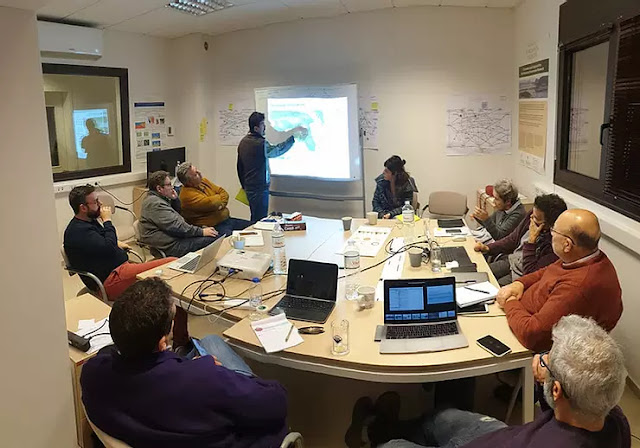
Lake Ohrid
Late July 2019
The summer light on Ohrid's surface: the "light of Zeus" - its ancient name Lychnidion.
The lake has 30+ m. visibility and spectacular "coastlines" - some similar to the Ionian island coasts.
Gin-clear spring trout waters in a southern Balkan lake.
Then the ichthyofauna (about 20+ native species) - legendary for its endemics, especially the unique and unresolved taxonomy of the local lake trouts, the interesting enigmas still persisting and so much still unknown....
This is Ohrid.
There's nothing like it, nowhere else on Earth.
And the lake is shared by North Macedonia and Albania, between the prestigious historic town of Ohrid (UNESCO sitec) and the less-populated and still somewhat "underdeveloped" Albanian coastline.
Vasso and I went in late July - when all of Skopje is relaxing by the Lake; but it was a work-trip so we just did a lot of that. It was my first formal collaboration with North Macedonia. We worked closely with the local scientists, enjoyed the wildlife and hope to return. Of course, our warmest thanks to our close friends in North Macedonia!
Some of our snap-shotes shared here.
 |
| The amazing karstic springs at Saint Naum, southern part of the Lake. |
 |
| A dice snake (Natrix tesselata) among many fishes on the eastern shores of the Lake. |
 |
| This is my most sentimental "Lake Ohrid Shot": a typically amazing concentration of fishes in gin-clear waters within a Phragmites reed bed. I had time for just two snorkel surveys on this trip -need to go back... |
 |
| Alburnoides ohridanus and Pachychilon pictum feedin on inverts on a rock I overturned. |
 |
| One of the headwaters streams that enter the Lake; here up in the mountains its just a cold-water trout creek - with huge Coltsfoot Petasites leaves. |
 |
| Sampling during our international effort. Researchers from Greece and North Macedonia working on fishes together.... |
 |
| We studied three streams and sampled nine sites over a period of about a week in North Macedonia. Wish we could have stayed more. Wonderful friends made. |
 |
The range-restricted endemic Barbel of the Ohrid -Drin system (Barbus sp.). This beautiful specimen caught in the river-mouth of the Sateska river, north shore of the Lake.
|
 |
| We visited a fish-farm with trout that are from the lake - presumably Salmo letnica - and we were assured by researchers of the Hydrobiological Institute that these are all of this species. |
 |
Salmo letnica (Karaman, 1924), Ohrid trout. This species has been introduced from Lake Ohrid to the transboundary Prespa Lakes (Crivelli et al., 1997) in the 1950s,where it may possibly also hybridise with the local endemic trout Salmo peristericus. The degree of establishment of this introduced taxon and its current status within Greek territory is unknown. Many thanks to our colleagues in Ohrid for getting us this close to trout at the trout farm.
|
 |
| The Belvica Salmo ohridanus (3 on R) and the Ohrid Trout Salmo letnica (big one on L). At Saint Naum taverna. |
 |
| Amazing visibility in the NE part of the lake. These are Dreissena zebra mussel patches on rocks below lake shore cliffs. |
 |
| Large shools of Alburnus skadarensis swim by as if they are large marine clupeids. |
 |
| Fishing with policemen friends I made on the NE side of the lake. |
 |
| The western - Albanian - side of the Lake. |
 |
| The village of Lin in Albania, western side of the Lake. |
 |
The southeastern shores of the lake.
|





